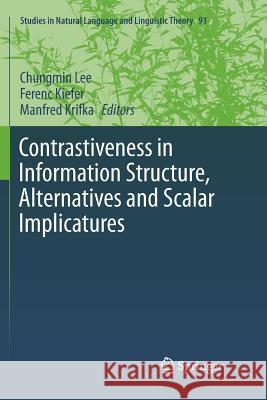Contrastiveness in Information Structure, Alternatives and Scalar Implicatures » książka
topmenu
Contrastiveness in Information Structure, Alternatives and Scalar Implicatures
ISBN-13: 9783319791685 / Angielski / Miękka / 2018 / 415 str.
Kategorie:
Kategorie BISAC:
Wydawca:
Springer
Seria wydawnicza:
Język:
Angielski
ISBN-13:
9783319791685
Rok wydania:
2018
Wydanie:
Softcover Repri
Ilość stron:
415
Waga:
0.60 kg
Wymiary:
23.39 x 15.6 x 2.26
Oprawa:
Miękka
Wolumenów:
01











